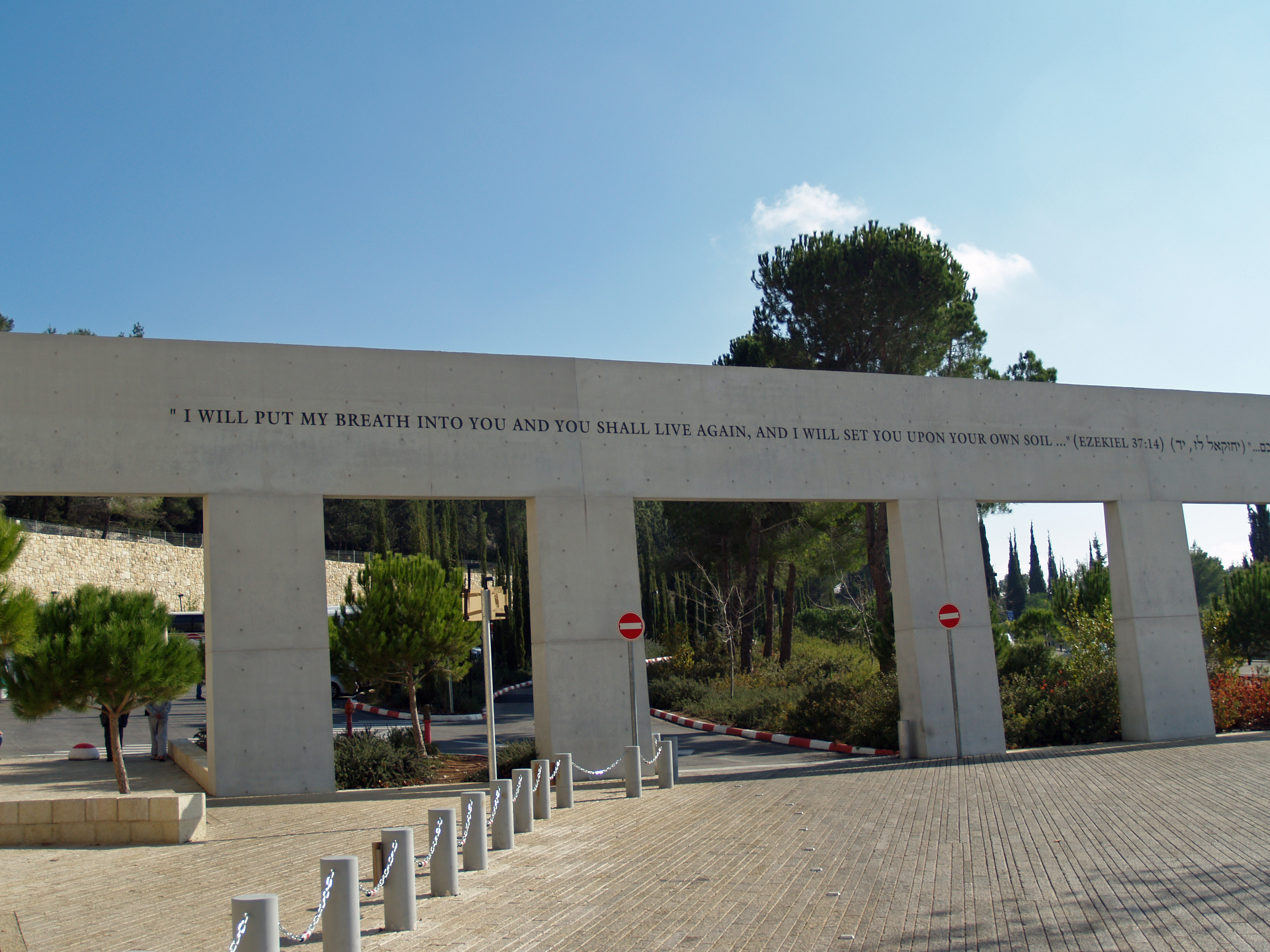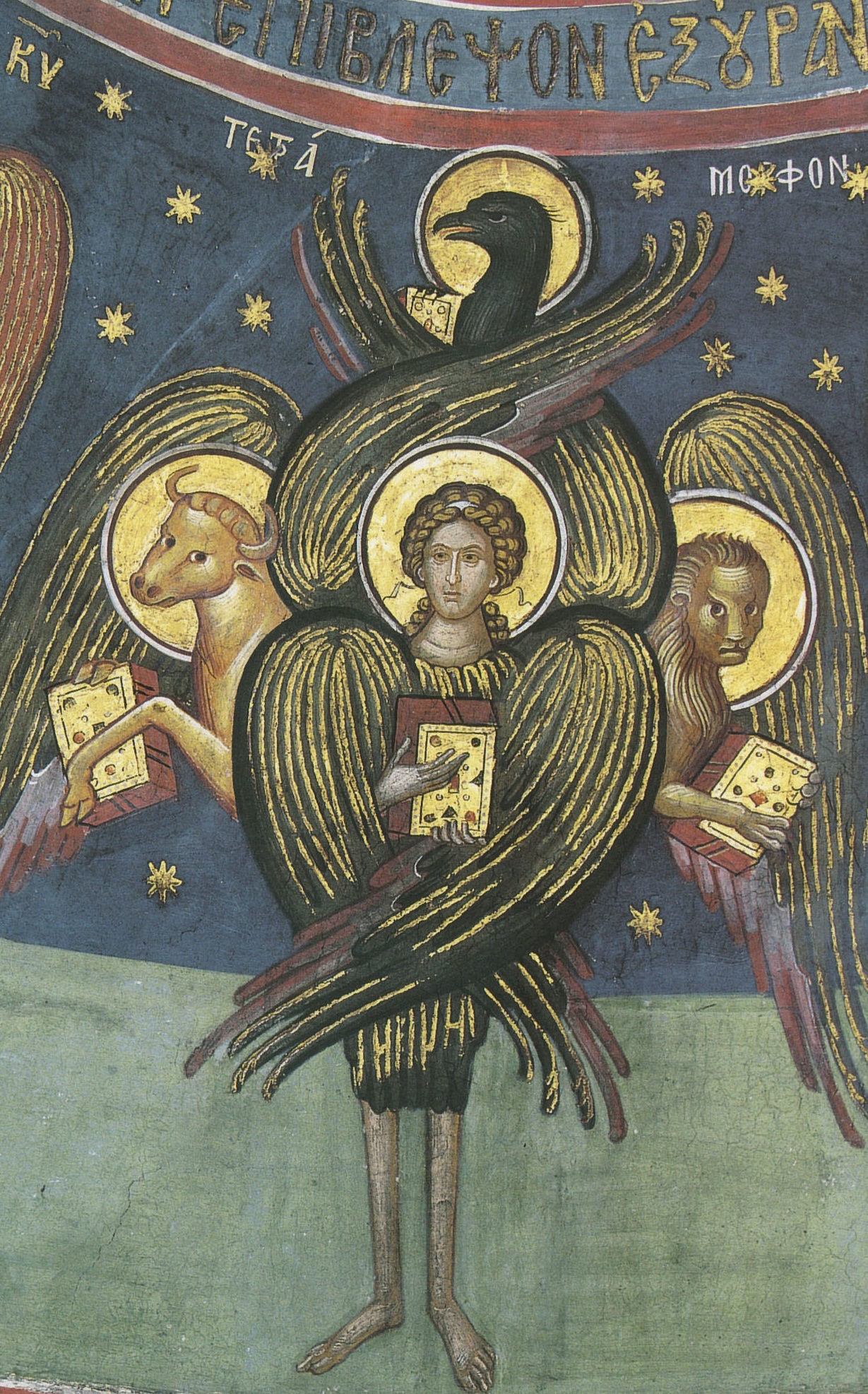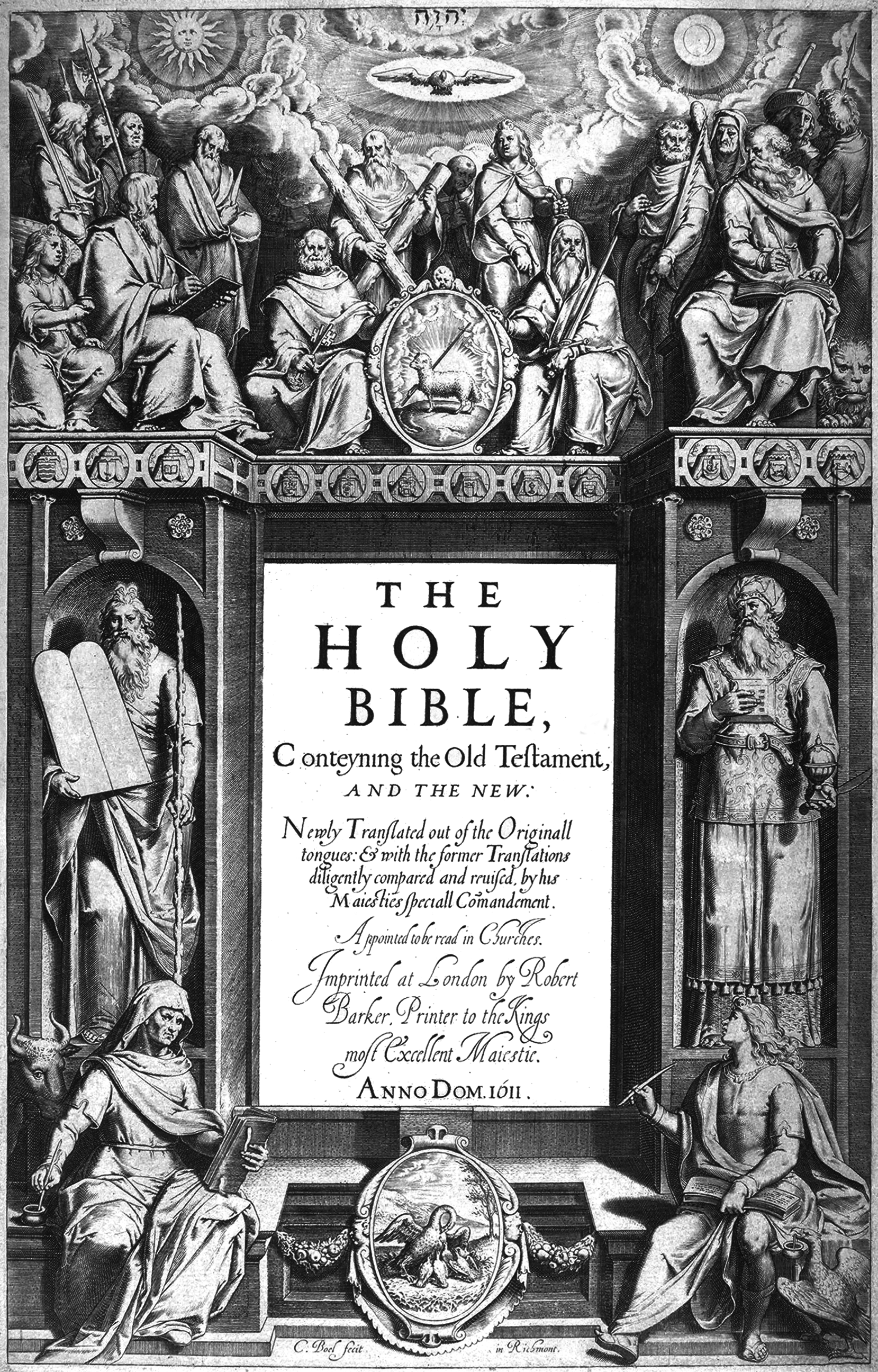|
Ezekiel 11
Ezekiel 11 is the eleventh chapter of the Book of Ezekiel in the Hebrew Bible or the Old Testament of the Christian Bible. This book contains the prophecies attributed to the prophet/priest Ezekiel, and is one of the Books of the Prophets. In this chapter, Ezekiel pronounces judgment on Jerusalem's "wicked counsellors" and promises that God will restore Israel. Text The original text was written in the Hebrew language. This chapter is divided into 25 verses. Textual witnesses Some early manuscripts containing the text of this chapter in Hebrew are of the Masoretic Text tradition, which includes the Codex Cairensis (895), the Petersburg Codex of the Prophets (916), Aleppo Codex (10th century), and Codex Leningradensis (1008). Fragments containing parts of this chapter were found among the Dead Sea Scrolls including 4Q73 (4QEzek; 50–25 BCE) with extant verses 1–3, 5–11; and 11Q4 (11QEzek; 50 BCE–50 CE) with the extant verse 19. There is also a translation into Koine Gree ... [...More Info...] [...Related Items...] OR: [Wikipedia] [Google] [Baidu] |
Book Of Ezekiel
The Book of Ezekiel is the third of the Latter Prophets in the Tanakh and one of the major prophetic books, following Isaiah and Jeremiah. According to the book itself, it records six visions of the prophet Ezekiel, exiled in Babylon, during the 22 years from 593 to 571 BCE, although it is the product of a long and complex history and does not necessarily preserve the very words of the prophet. The visions, and the book, are structured around three themes: (1) Judgment on Israel (chapters 1–24); (2) Judgment on the nations (chapters 25–32); and (3) Future blessings for Israel (chapters 33–48). Its themes include the concepts of the presence of God, purity, Israel as a divine community, and individual responsibility to God. Its later influence has included the development of mystical and apocalyptic traditions in Second Temple and Judaism and Christianity. Structure Ezekiel has the broad three-fold structure found in a number of the prophetic books: oracles ... [...More Info...] [...Related Items...] OR: [Wikipedia] [Google] [Baidu] |
Aleppo Codex
The Aleppo Codex ( he, כֶּתֶר אֲרָם צוֹבָא, romanized: , lit. 'Crown of Aleppo') is a medieval bound manuscript of the Hebrew Bible. The codex was written in the city of Tiberias in the tenth century CE (circa 920) under the rule of the Abbasid Caliphate, and was endorsed for its accuracy by Maimonides. Together with the Leningrad Codex, it contains the Aaron ben Moses ben Asher, Ben-Asher masoretic tradition. The codex was kept for five centuries in the Central Synagogue of Aleppo, until the synagogue was torched during anti-Jewish riots in 1947. The fate of the codex during the subsequent decade is unclear: when it resurfaced in Israel in 1958, roughly 40% of the manuscript—including the majority of the Torah section—was missing, and only two additional leaves have been recovered since then. The original supposition that the missing pages were destroyed in the synagogue fire has increasingly been challenged, fueling speculation that they survive i ... [...More Info...] [...Related Items...] OR: [Wikipedia] [Google] [Baidu] |
Cherub
A cherub (; plural cherubim; he, כְּרוּב ''kərūḇ'', pl. ''kərūḇīm'', likely borrowed from a derived form of akk, 𒅗𒊏𒁍 ''karabu'' "to bless" such as ''karibu'', "one who blesses", a name for the lamassu) is one of the unearthly beings who directly attend to God, according to Abrahamic religions. The numerous depictions of cherubim assign to them many different roles, such as protecting the entrance of the Garden of Eden. Abrahamic religious traditions In Jewish angelic hierarchy, cherubim have the ninth (second-lowest) rank in Maimonides' ''Mishneh Torah'' (12th century), and the third rank in Kabbalistic works such as '' Berit Menuchah'' (14th century). ''De Coelesti Hierarchia'' places them in the highest rank alongside Seraphim and Thrones. In the Book of Ezekiel and (at least some) Christian icons, the cherub is depicted as having two pairs of wings, and four faces: that of a lion (representative of all wild animals), an ox ( domestic animal ... [...More Info...] [...Related Items...] OR: [Wikipedia] [Google] [Baidu] |
Easy-to-Read Version
The Holy Bible: Easy-to-Read Version (ERV) is an English translation of the Bible compiled by the World Bible Translation Center. It was originally published as the English Version for the Deaf (EVD) by BakerBooks. History Some Deaf readers struggle with reading English because sign language is their first language. The World Bible Translation Center (WBTC) decided to do a translation that would make reading the Bible easier for them. The EVD uses simpler vocabulary and shorter sentences to make it more simple to understand. The English Version for the Deaf (EVD), and its second cover, the Easy to Read Version (ERV) were translated by Ervin Bishop (Greek Language Translator), David Stringham (Hebrew Language Translator) and Benton L Dibrell (Deaf Language Specialist, Interpreter, and Translator). The translators used a thought-for-thought or functional equivalence method of translation. It was found to be useful for others who struggle with reading and is often used in prisons ... [...More Info...] [...Related Items...] OR: [Wikipedia] [Google] [Baidu] |
Charles Ellicott
Charles John Ellicott (1819–1905) was a distinguished English Christian theologian, academic and churchman. He briefly served as Dean of Exeter, then Bishop of the united see of Gloucester and Bristol. Early life and family Ellicott was born in Whitwell, Rutland on 25 April 1819. He was educated at Stamford School and St John's College, Cambridge. He married Constantia Ann Becher at St Marylebone Parish Church, London on 31 July 1848. One of their children was the composer Rosalind Ellicott. Ecclesiastical career Following his ordination into the Anglican ministry in 1848, he was Vicar of Pilton, Rutland and then Professor of Divinity at King's College London and ''Hulsean Professor of Divinity'' at Cambridge. The chancel of St Nicholas' Church, Pilton was rebuilt in 1852 in 13th-century style. In 1861, he was appointed Dean of Exeter. Two years later he was nominated the bishop of the See of Gloucester and Bristol on 6 February and consecrated on 25 March 186 ... [...More Info...] [...Related Items...] OR: [Wikipedia] [Google] [Baidu] |
Sun-worship
A solar deity or sun deity is a deity who represents the Sun, or an aspect of it. Such deities are usually associated with power and strength. Solar deities and Sun worship can be found throughout most of recorded history in various forms. The Sun is sometimes referred to by its Latin name ''Sol'' or by its Greek name ''Helios''. The English word ''sun'' derives from Proto-Germanic *''sunnǭ''. Overview Predynasty Egyptian beliefs attribute Atum as the Sun god and Horus as god of the sky and Sun. As the Old Kingdom theocracy gained influence, early beliefs were incorporated into the expanding popularity of Ra and the Osiris-Horus mythology. Atum became Ra-Atum, the rays of the setting Sun. Osiris became the divine heir to Atum's power on Earth and passed his divine authority to his son, Horus. Other early Egyptian myths imply that the Sun is incorporated with the lioness Sekhmet at night and is reflected in her eyes; or that the Sun is found within the cow Hathor durin ... [...More Info...] [...Related Items...] OR: [Wikipedia] [Google] [Baidu] |
King James Version
The King James Version (KJV), also the King James Bible (KJB) and the Authorized Version, is an English translation of the Christian Bible for the Church of England, which was commissioned in 1604 and published in 1611, by sponsorship of King James VI and I. The 80 books of the King James Version include 39 books of the Old Testament, an intertestamental section containing 14 books of what Protestants consider the Apocrypha, and the 27 books of the New Testament. Noted for its "majesty of style", the King James Version has been described as one of the most important books in English culture and a driving force in the shaping of the English-speaking world. The KJV was first printed by John Norton and Robert Barker, who both held the post of the King's Printer, and was the third translation into English language approved by the English Church authorities: The first had been the Great Bible, commissioned in the reign of King Henry VIII (1535), and the second had been th ... [...More Info...] [...Related Items...] OR: [Wikipedia] [Google] [Baidu] |
Codex Sinaiticus
The Codex Sinaiticus ( Shelfmark: London, British Library, Add MS 43725), designated by siglum [Aleph] or 01 (in the Gregory-Aland numbering of New Testament manuscripts), δ 2 (in the von Soden numbering of New Testament manuscripts), or Sinai Bible is a 4th-century Christian manuscript of a Greek Bible, containing the majority of the Greek Old Testament, including the Apocrypha, and the Greek New Testament, with both the Epistle of Barnabas and the Shepherd of Hermas included. It is written in uncial letters on parchment. It is one of the four great uncial codices (these being manuscripts which originally contained the whole of both the Old and New Testaments). Along with Codex Alexandrinus and Codex Vaticanus, it is one of the earliest and most complete manuscripts of the Bible, and contains the oldest complete copy of the New Testament. It is a historical treasure, and using the study of comparative writing styles (palaeography), it has been dated to the m ... [...More Info...] [...Related Items...] OR: [Wikipedia] [Google] [Baidu] |
Codex Marchalianus
Codex Marchalianus designated by siglum Q is a 6th-century Greek manuscript copy of the Greek version of the Hebrew Bible ( Tanakh or Old Testament) known as the Septuagint. The text was written on vellum in uncial letters. Palaeographically it has been assigned to the 6th century. Marginal annotations were later added to the copy of the Scripture text, the early ones being of importance for a study of the history of the Septuagint. Its name was derived from a former owner, René Marchal. Description The manuscript is an in quarto volume, arranged in quires of five sheets or ten leaves each, like Codex Vaticanus or Codex Rossanensis. It contains text of the Twelve Prophets, Book of Isaiah, Book of Jeremiah with Baruch, Lamentations, Epistle of Jeremiah, Book of Ezekiel, Book of Daniel, with Susanna and Bel. The order of the 12 Prophets is unusual: Hosea, Amos, Micah, Joel, Obadiah, Jonah, Nahum, Habakkuk, Zephaniah, Haggai, Zechariah, and Malachi. The ord ... [...More Info...] [...Related Items...] OR: [Wikipedia] [Google] [Baidu] |
Codex Alexandrinus
The Codex Alexandrinus (London, British Library, Royal MS 1. D. V-VIII), designated by the siglum A or 02 (in the Gregory-Aland numbering of New Testament manuscripts), δ 4 (in the von Soden numbering of New Testament manuscripts), is a manuscript of the Greek Bible,The Greek Bible in this context refers to the Bible used by Greek-speaking Christians who lived in Egypt and elsewhere during the early history of Christianity. This Bible contained both the Old and New Testaments in Koine Greek. written on parchment. Using the study of comparative writing styles (palaeography), it has been dated to the fifth century. It contains the majority of the Greek Old Testament and the Greek New Testament. It is one of the four Great uncial codices (these being manuscripts which originally contained the whole of both the Old and New Testaments). Along with Codex Sinaiticus and Vaticanus, it is one of the earliest and most complete manuscripts of the Bible. It derives its name from ... [...More Info...] [...Related Items...] OR: [Wikipedia] [Google] [Baidu] |
Codex Vaticanus
The Codex Vaticanus ( The Vatican, Bibl. Vat., Vat. gr. 1209), designated by siglum B or 03 (in the Gregory-Aland numbering), δ 1 ( von Soden), is a fourth-century Christian manuscript of a Greek Bible, containing the majority of the Greek Old Testament and the majority of the Greek New Testament. It is one of the four great uncial codices. Along with Codex Alexandrinus and Codex Sinaiticus, it is one of the earliest and most complete manuscripts of the Bible. The codex has been dated palaeographically to the 4th century. The manuscript became known to Western scholars as a result of correspondence between Erasmus and the prefects of the Vatican Library. Portions of the codex were collated by several scholars, but numerous errors were made during this process. The codex's relationship to the Latin Vulgate was unclear and scholars were initially unaware of its value. This changed in the 19th century when transcriptions of the full codex were completed. It was at that point ... [...More Info...] [...Related Items...] OR: [Wikipedia] [Google] [Baidu] |
Septuagint
The Greek Old Testament, or Septuagint (, ; from the la, septuaginta, lit=seventy; often abbreviated ''70''; in Roman numerals, LXX), is the earliest extant Greek translation of books from the Hebrew Bible. It includes several books beyond those contained in the Masoretic text of the Hebrew Bible as canonically used in the tradition of mainstream Rabbinical Judaism. The additional books were composed in Greek, Hebrew, or Aramaic, but in most cases, only the Greek version has survived to the present. It is the oldest and most important complete translation of the Hebrew Bible made by the Jews. Some targums translating or paraphrasing the Bible into Aramaic were also made around the same time. The first five books of the Hebrew Bible, known as the Torah or the Pentateuch, were translated in the mid-3rd century BCE. The remaining translations are presumably from the 2nd century BCE. The full title ( grc , Ἡ μετάφρασις τῶν Ἑβδομήκοντα, , The Tr ... [...More Info...] [...Related Items...] OR: [Wikipedia] [Google] [Baidu] |








.jpg)